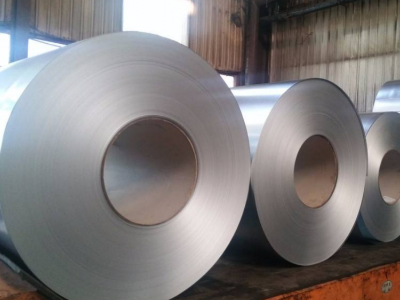彩涂板底材的性能和影响因素有哪些?
天物彩板专注彩板行业16年——廊坊彩钢生产厂家电话_河北彩板厂家_天物彩板请拨打网站上方电话咨询

彩涂基板为镀锌板,该材料的常用力学性能有拉伸、冲击和硬度,对不同的用途来说,要求检测的项目是不一样的,一般建筑围护结构用彩涂板仅仅进行拉伸试验,检测的项目有抗拉强度、屈服强度和延伸率。
屈服强度
当基板在拉伸时,应力超过弹性极限后,变形增加较快,此时除了产生弹性变形外,还产生部分塑性变形。
当应力达到屈服点后,塑性应变急剧增加,曲线出现一个波动的小平台,这种现象称为屈服。这一阶段的最大、最小应力分别称为上屈服点(ReH)和下屈服点(ReL)。
由于下屈服点的数值较为稳定,因此以它作为材料抗力的指标,称为屈服点或屈服强度。
抗拉强度
抗拉强度(Rm或Ts)也叫强度极限,指材料在拉断前承受的最大应力值。
当基板的屈服到一定程度后,由于内部晶粒重新排列,其抵抗变形能力又重新提高,此时变形虽然发展很快,但却只能随着应力的提高而提高,直至应力达最大值。
此后,基板抵抗变形的能力明显降低,并在最薄弱处发生较大的塑性变形,此处试件截面迅速缩小,出现颈缩现象,直至断裂破坏。
基板受拉断裂前的最大应力值称为强度极限或抗拉强度,它的检测要求和方法与屈服强度一致,事实上在测量时屈服强度和抗拉强度在拉伸曲线上被同时检测出来。
延伸率
基板材料在拉伸断裂后,总伸长与原始标距长度的百分比。
硬度
洛氏硬度、表面洛氏硬度试验主要原理是先用初始试验力将压头压到试样表面,再用总试验力将压头压入试样表面,经规定保持时间后,卸除主试验力,用测量的残余压痕深度增量计算硬度值。
它适合于冷轧板及热镀锌、电镀锌板、电镀锡板的洛氏硬度和表面洛氏硬度测量。根据钢板的厚度不同,一般来说,薄钢板测量表面硬度,而相对较厚的钢板则测量洛氏硬度。
The color coated base plate is galvanized steel plate. The common mechanical properties of the material are tensile, impact and hardness. For different purposes, the items required to be tested are different. Generally, the color coated steel plate for
building envelope is only used for tensile test, and the tested items include tensile strength, yield strength and elongation.
yield strength
When the stress exceeds the elastic limit, the deformation increases rapidly. At this time, in addition to the elastic deformation, some plastic deformation also occurs.
When the stress reaches the yield point, the plastic strain
increases sharply, and a small fluctuating platform appears in the curve, which is called yield. The maximum and minimum stresses in this stage are called the upper yield point (Reh) and the lower yield point (REL), respectively.
Because the value
of the lower yield point is relatively stable, it is called yield point or yield strength as the index of material resistance.
tensile strength
The tensile strength (RM or TS) is also called the strength limit, which refers to the maximum
stress value that the material bears before breaking.
When the substrate yield to a certain extent, due to the rearrangement of internal grains, its resistance to deformation is improved again. At this time, although the deformation develops rapidly,
it can only increase with the increase of stress until the stress reaches the maximum value.
After that, the ability of the base plate to resist deformation is obviously reduced, and a large plastic deformation occurs at the weakest place, where the cross section of the test piece is rapidly reduced, necking phenomenon appears, until the
fracture failure.
The maximum stress value of the substrate before tensile fracture is called the strength limit or tensile strength. Its testing requirements and methods are consistent with the yield strength. In fact, the yield strength and tensile
strength are detected on the tensile curve at the same time.
Elongation
Percentage of the total elongation of the substrate material to the original gauge length after tensile fracture.
hardness
The main principle of Rockwell hardness and surface Rockwell hardness test is to first press the indenter to the surface of the sample with the initial test force, and then press the indenter to the surface of the sample with the total test force.
After the specified holding time, remove the main test force, and calculate the hardness value with the measured residual indentation depth increment.
It is suitable for the measurement of Rockwell hardness and surface Rockwell hardness of cold-rolled
sheet, hot-dip galvanized sheet, electroplated tin sheet. According to the thickness of steel plate, generally speaking, the surface hardness of steel plate is measured, while the Rockwell hardness of relatively thick steel plate is measured.
